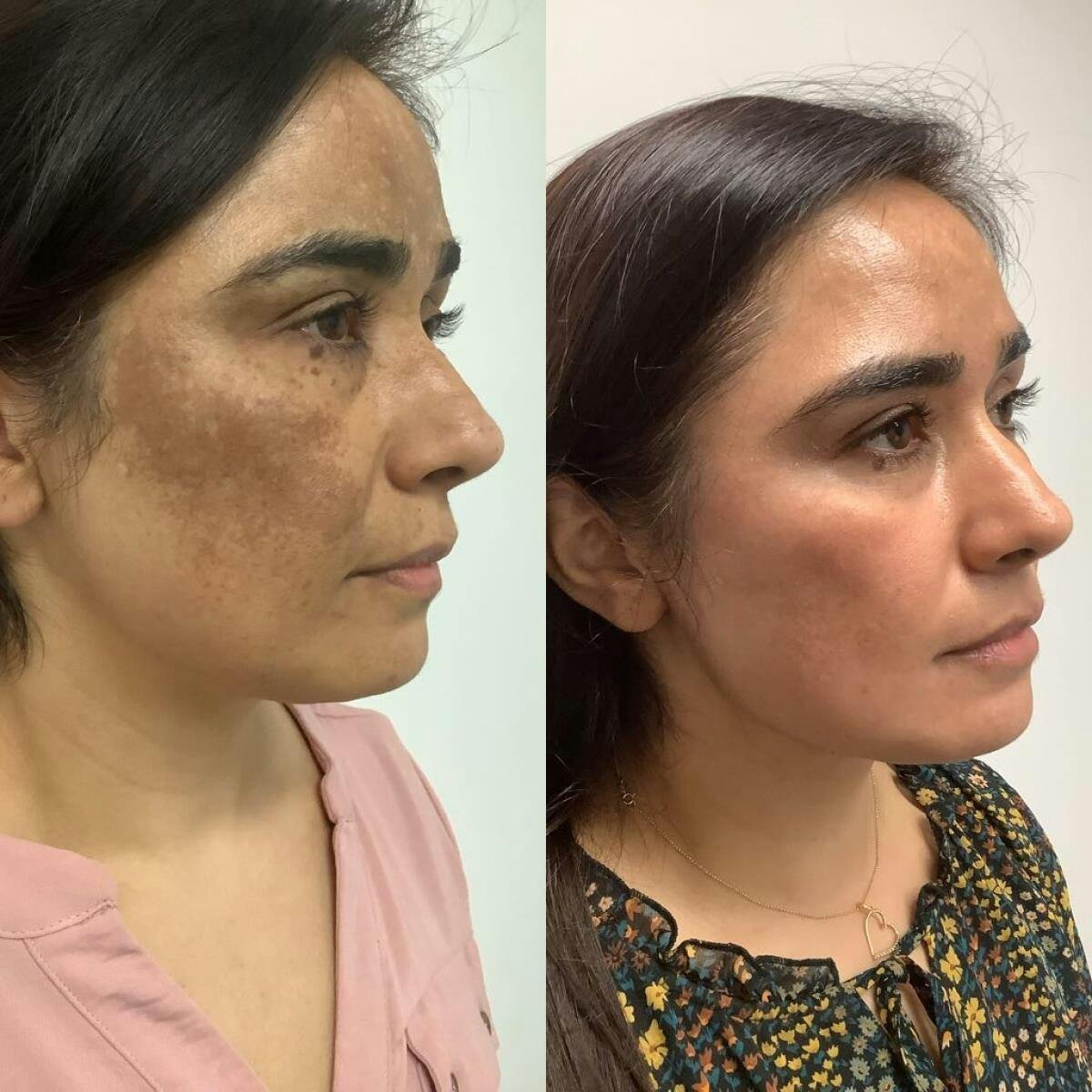The loss of skin color due to decreased melanin production.
Ever notice someone with lighter patches on their skin, or even a complete loss
of pigment? That's depigmentation, where skin loses melanin, the coloring
pigment. It can appear in patches or larger areas, and can be temporary or
permanent.
Several factors can cause this. Vitiligo, an autoimmune disease, disrupts melanin
production, leaving white patches. Injuries, like cuts or burns, can heal with
lighter pigmentation too. Fungal infections can cause temporary lightening, and
some medications or creams have depigmentation as a side effect. Sun damage
is a big one - too much sun can lead to uneven pigmentation and sunspots.
Finding treatment depends on the cause. A dermatologist can diagnose the issue
and recommend the best approach. Here are some options:
A consultation to identify the cause and create a personalized treatment plan.
Creams with ingredients like hydroquinone or Kojic acid can lighten darker areas
and even out skin tone.
Chemical peels gently remove the top skin layer, encouraging new, evenly
pigmented cells to grow.
In some cases, lasers can target and remove pigmented areas.
It's important to note that depigmentation caused by vitiligo requires specialized
treatment. This article is just a general overview and shouldn't replace
professional medical advice.
The good news is there are clinics that can help you achieve an even skin tone.
Here's why they might be a good choice:
They personalize treatment plans to your specific needs.
They use the latest advancements in dermatology to get you the best results
possible.
Their team has a proven track record of success in treating various skin
conditions.
So, if uneven skin tone is bothering you, consider a consultation to see how they
can help you achieve a radiant, even complexion. Remember, while this article
can't replace a doctor's advice, it can be a helpful starting point to learn more
about depigmentation.


Renew You Skin & Hair Care center believes in keeping our clients happy and satisfied. Our motive is to provide a perfect treatment to our clients for fulfilling their desires. We have the best skin, …
© renewyou 2022.